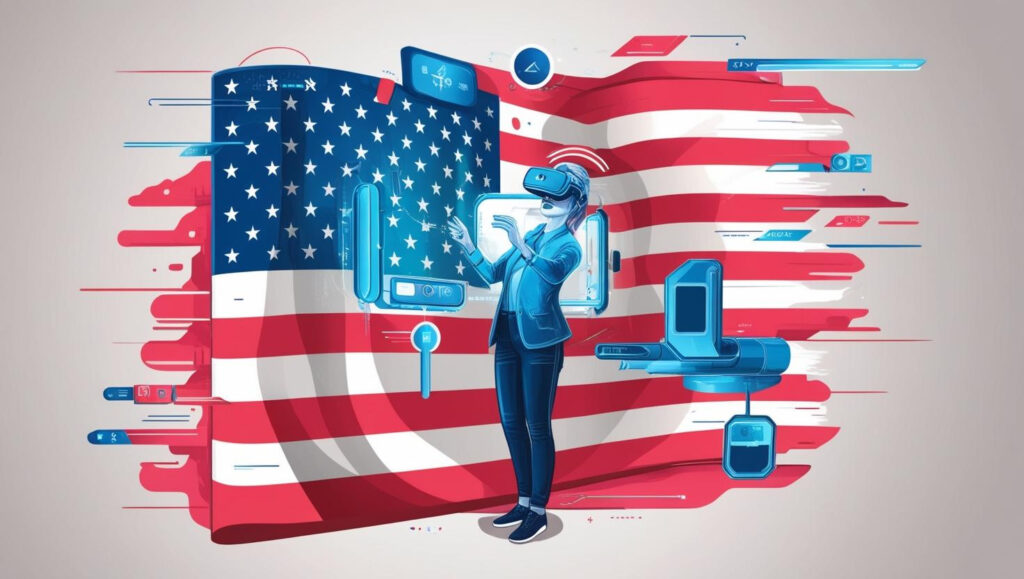The augmented and virtual reality (AR/VR) market has long stood at the frontier of immersive technology innovation. From transforming gaming experiences to revolutionizing industrial training and healthcare diagnostics, AR/VR has proven its potential across diverse sectors. However, global trade dynamics—particularly those influenced by the Trump-era tariffs on Chinese imports—have posed notable challenges to the industry’s growth trajectory. Despite the initial disruptions, the AR/VR market is now positioned for a resurgence, unlocking new opportunities in a post-tariff world.

Book Your “Trump Tariff Threat Assessment”
https://www.marketsandmarkets.com/pdfdownloadNew.asp?id=1185
Trump Tariffs and Their Impact on the AR/VR Ecosystem
The Trump administration’s tariffs on Chinese-made goods, particularly under Section 301, affected a broad range of tech hardware—including AR and VR headsets, sensors, lenses, and display components. As China accounted for a significant portion of the AR/VR supply chain, these tariffs led to:
- Increased production costs: Tariffs drove up the costs of manufacturing components like displays, chips, and optical systems.
- Supply chain disruption: Companies reliant on Chinese manufacturing had to reassess logistics and seek alternative sources.
- Delayed product rollouts: Higher costs and production complexity slowed down launch timelines for many consumer and enterprise-grade devices.
These factors collectively caused hesitation among investors and developers, slowing momentum temporarily.
A New Era: How the Market is Adapting and Evolving
Despite these initial challenges, the AR/VR market has demonstrated resilience. Companies began diversifying supply chains, investing in local manufacturing, and leveraging advancements in modular design. Post-tariffs, the AR/VR ecosystem has evolved in several critical ways:
1. Reshoring and Nearshoring of Manufacturing
Tech giants and startups alike have started shifting assembly operations closer to consumer markets, particularly in North America and Southeast Asia. This reduces dependency on Chinese components and buffers against future geopolitical risks.
2. Investment in Domestic Innovation
U.S.-based companies are increasing R&D investments to develop in-house AR/VR hardware solutions, including microdisplays, haptics, and motion sensors. This trend promotes ecosystem independence and IP security.
3. Strategic Collaborations
To offset costs and accelerate innovation, industry leaders are forming strategic partnerships. Collaborations between chipmakers, display technology firms, and software developers are helping to create more integrated and cost-effective AR/VR platforms.
Emerging Opportunities in the Post-Tariff Landscape
With a more stable supply chain and growing demand across sectors, the AR/VR market is primed for expansion. Key opportunities include:
• Enterprise Adoption Surge
Post-pandemic digital transformation efforts have intensified interest in AR/VR for training, remote collaboration, and product design. Manufacturing, logistics, and healthcare are among the top beneficiaries.
• Education and EdTech Integration
Immersive learning is gaining traction in schools and universities. With more affordable hardware and better content, AR/VR is becoming central to STEM and vocational training programs.
• Metaverse and Consumer Experiences
While the metaverse buzz has cooled slightly, consumer-facing AR/VR applications continue to evolve. Gaming, social interaction, and virtual tourism are seeing renewed engagement as hardware becomes more accessible.
• Regulatory and Government Support
Post-tariffs, several governments have introduced incentives and grants for immersive tech startups to encourage local innovation and production—further fueling growth.